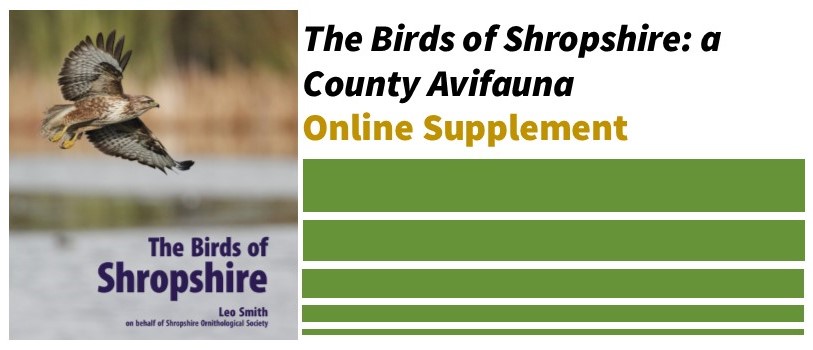Lesser Whitethroat (Population and Distribution)
The breeding distribution change map for Lesser Whitethroat is one of the most intriguing. The number of tetrads where they were found in both Atlas periods (137) is exceeded by tetrads where they were found only in 1985-90 (183) or only in 2008-13 (184). The stronghold in the recent Atlas period was in the north-west, with breeding evidence found in 57 out of 75 tetrads, and confirmed breeding in 17. Favoured habitat is good quality hedgerows with occasional trees in arable farmland, particularly long-established and unkempt hawthorn hedges. The song is loud, distinctive and far carrying, but the males are skulking when not singing, and once the territory is established and nesting starts, they become quiet and are more difficult to find. However when a pair has young their alarm calls are very loud and distinctive, so confirming breeding should be relatively easy, but that occurred in only 18% of tetrads where they were found in the recent Atlas period (almost one-third of which were in the north-west).
They are therefore potentially overlooked, especially in areas with low density, with late April or early May visits for song and July visits for young more likely to be successful than those in between.
Some apparent losses in arable farmland in the Severn valley and the north-east can be attributed to loss of hedgerows (bigger fields for bigger machinery), heavier cutting of retained hedgerows, and loss of food because of a reduction in field margins. However, such losses appear to have been compensated for by an equal number of gains. Lesser Whitethroat is scarce, and, although nationally it is expanding, it is at the edge of its range here. Potentially suitable habitat is still widespread, particularly in the north, so the small number of returning males have considerable choice and little competition when establishing territory. As they are short lived, with a typical lifespan for those reaching breeding age of only two years, there has been little opportunity, or necessity, to develop regular re-use of the same territories.
The long-running CBC at Oswestry Racecourse, and the raw BBS data 1997-2013, lend support to this analysis. Lesser Whitethroat was not recorded on the CBC in the first five years from 1964, but was then found in 19 out of 31 years between 1969 and 1999, where a singing male was particularly fond of a blackthorn hedge. Despite this regular occurrence, it only qualified for a territory (found on at least three out of 10 visits) in 1996 and 1997. During BBS surveys it was found on only 128 visits, less than 8% of the total, but in 35 different 1km squares. The frequency of occurrence increased – only 31 were counted in the first seven years, but there were 49 and 48 respectively in the five year bands 2004-08 and 2009-13. More than one was counted on 33 visits, but again the frequency of such counts increased over time – 7, 10 and 16 in the same three periods respectively. Only in six of the 35 different squares was it recorded on 10 or more visits (maximum 16 – between one-third and one half of all visits), and in all six of these squares it was first recorded between 2000 and 2004. On only 30 occasions was it recorded on both the early and late visit to a particular BBS square in the same year. This also suggests that the species is easily overlooked, it has little tendency to return to the same sites year after year, and the population has increased somewhat over the last 10 years or so.
Nationally, the range is expanding northwards. None were found in eight of the 19 10km squares wholly in Shropshire during fieldwork for the first national BTO Atlas (1976), but all had some level of breeding evidence in 1985-90, and confirmed or probable breeding evidence was found in all except one of these squares for the recent Atlas. Nationally, the change in relative abundance shown in the BTO Atlas (2013) suggests losses in the uplands in the south-west and gains in the Ellesmere / Wem area as part of this northerly (climatic?) shift.
Based on TTV counts the population is estimated at 1,100 – 1,200 territories, slightly more than the 1992 estimate of 700 – 1,000 (an average of 2-3 pairs per tetrad where it was found), but this figure is often exceeded in the north-west stronghold (Allan Dawes, pers.comm.).
![]() Return to Avifauna Supplement Home
Return to Avifauna Supplement Home
![]() Return to SOS home
Return to SOS home

